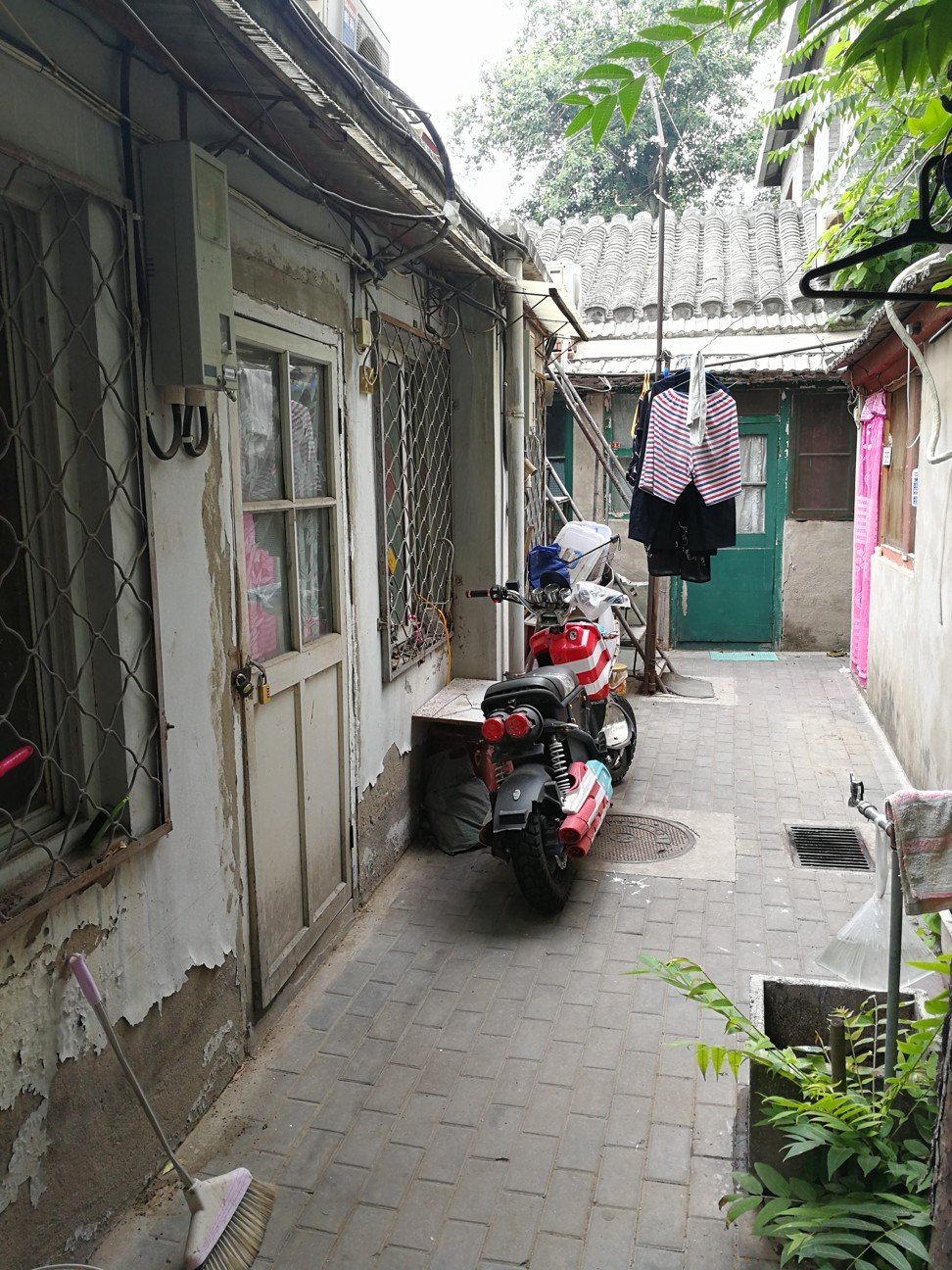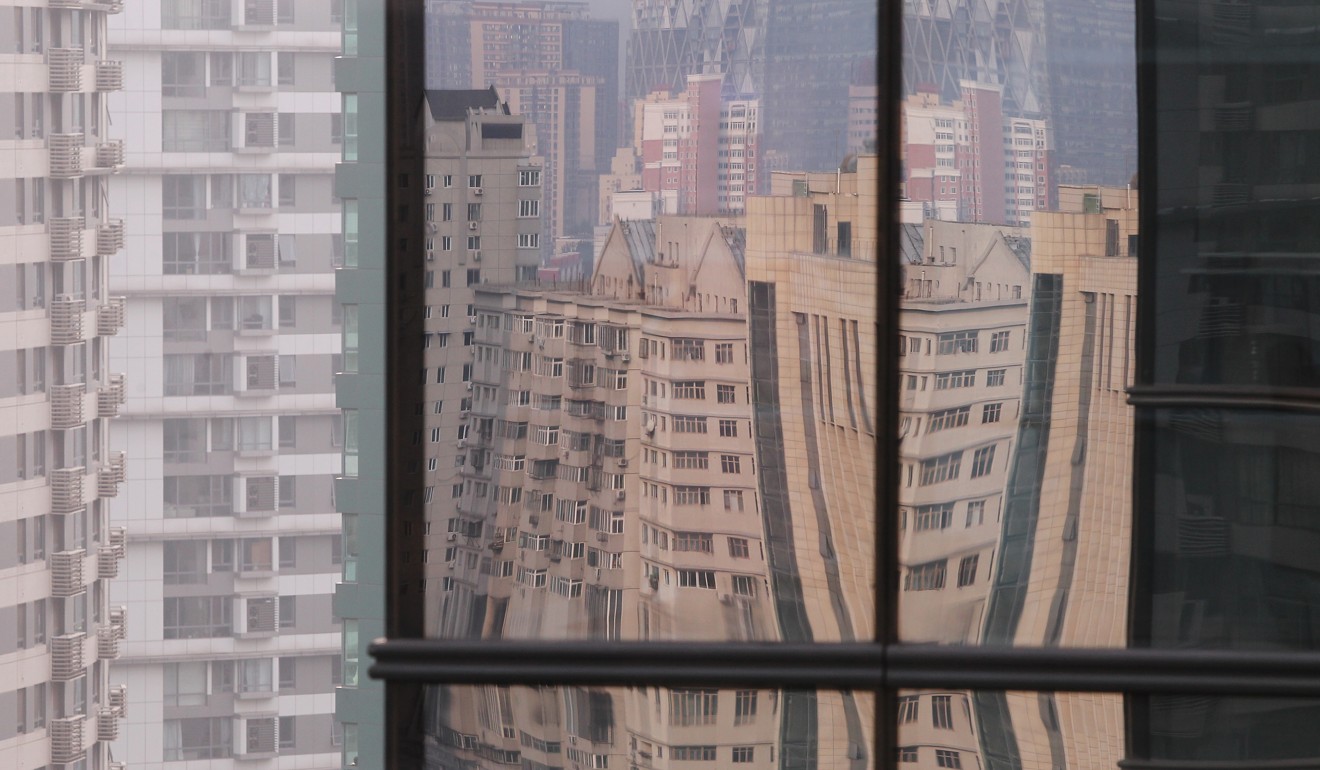
Forget Hong Kong’s micro flats, itsy-bitsy 72 sq ft Beijing space sells for a whopping US$384,500
If the eye-watering prices of Hong Kong’s micro apartments make heads spin, how about a dilapidated stand-alone house in a narrow alley squished on both sides and no bigger than an oversized wardrobe in Beijing. Warning: the house does not have a toilet.
A 10-minute walk from Tiananmen Square and only 400 metres from the grandiose egg-shaped National Centre for Performing Arts, a 6.7 square metre (72 square feet) property in Xicheng district was sold this month for a whopping 2.5 million yuan (US$384,500) or 373,000 yuan per sq m. By comparison the average secondary home price in China’s capital is 59,000 yuan per sq m.

For the sake of comparison, Hong Kong’s micro flats average 200 sq ft, a standard 20-foot shipping container measures 165 sq ft, while a standard UK-size car parking space is 126 sq ft. Which means this house is no bigger than an oversized wardrobe.
Originally built in 1949, the market value was reached through a court auction – the property was confiscated because of a debt dispute involving the owner.
The property auction drew interest from 49 bidders which had a starting price of 600,000 yuan, who eventually drove the price up to 2.5 million yuan, according to the court in Fengtai district, which held the auction.

It is difficult to ascertain the fair market value of such houses because there have hardly been any transactions in recent years, according to interviews with four residents in the neighbourhood and two property agents.
Why the fuss? There are so many super rich in the city, 2.5 million yuan is just a small sum for them
Hu Jun, an agent with property broker 5i5j Group near Tongjing Alley, said that his company was not involved in such deals, but added that flats, built in the 1990s, in the neighbourhood sell for an average of 120,000 yuan per sq m.
Zhang Dawei, research head of Centaline Property, said it was a steal at 2.5 million yuan. “The case is isolated. It has nothing to do with the overall housing market in Beijing,” Zhang said.
The Post made repeated attempts to reach the buyer for comment and the court declined a request for comment.
However, Guy Cuicui, a court judge, told China News Agency that one of the main reasons buyers are interested such auctions is because they are exempted from commission fees.
Beijing brokers typically collect 2.2-2.7 per cent of the property value as commission.
Besides, owning such homes downtown allows the buyers to send their children to nearby elite schools. Unlike cities in other countries, renters are not entitled to send their children to schools in neighbourhoods in which they do not own a home. Every neighbourhood corresponds to certain schools strictly defined by local governments.
A local resident said the government has been trying to clear the area for some time now, offering owners 135,000 yuan per sq m as compensation, which has not been enough to persuade them to relocate. The four local residents, who were interviewed, thought the 373,000 yuan price tag was fair.
“Why the fuss? There are so many super rich in the city, 2.5 million yuan is just a small sum for them,” said Zhao, a local resident in his 70s who would only give his surname.
But officials said they were not sure if such a small unit qualifies the owner for top schools in the area. Local government regulations stipulate that only units “suitable for human living” will qualify for schools in the area, leaving it to the discretion of the local authorities to decide if the 6.7 sq m flat counts.
The enthusiasm for such homes that renders top educational resources had lured flocks of buyers to dilapidated bungalows and even basement units in downtown Beijing, inflating prices to well above 100,000 yuan per sq m.
Ads for such property in the narrow alleys of Tongjing are found everywhere where overhead wires resemble cobwebs and clothes are found drying everywhere.

The city’s authorities last April had to ban owners of bungalows from splitting the shelters and imposed buying restrictions – allowing only those with Beijing household registration (hukou) and those who had contributed to the local social security fund for 60 months.
The harsh buying restrictions in Beijing since last March have halved the sales volume in the city in the past year, with the average transactional price falling month-on-month for 10 consecutive months until March.
Although the price picked up marginally in April and May, 65 per cent of homeowners expect prices to continue to fall, according to Centaline Property.

